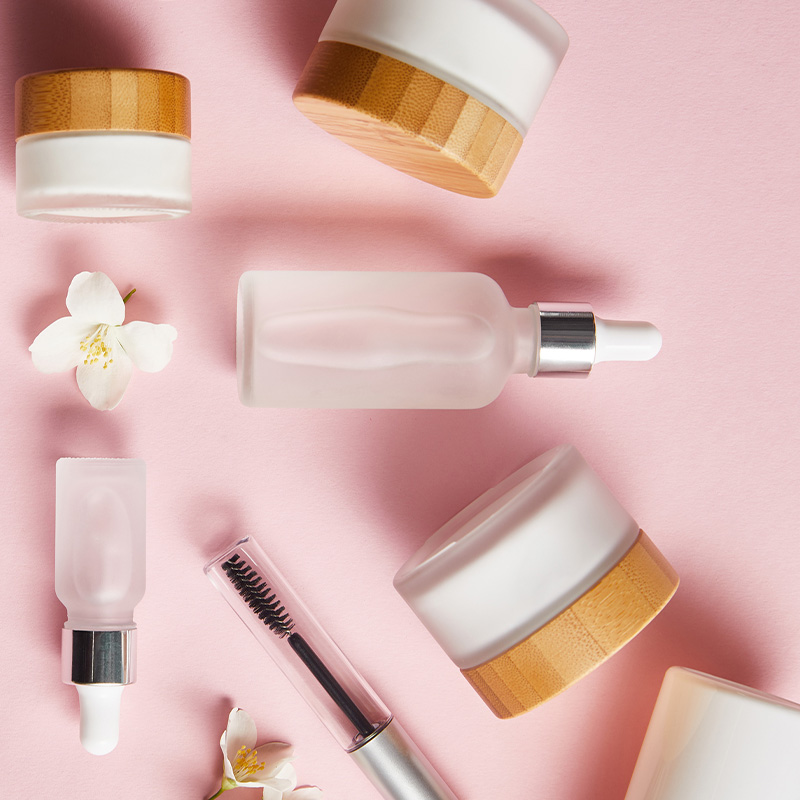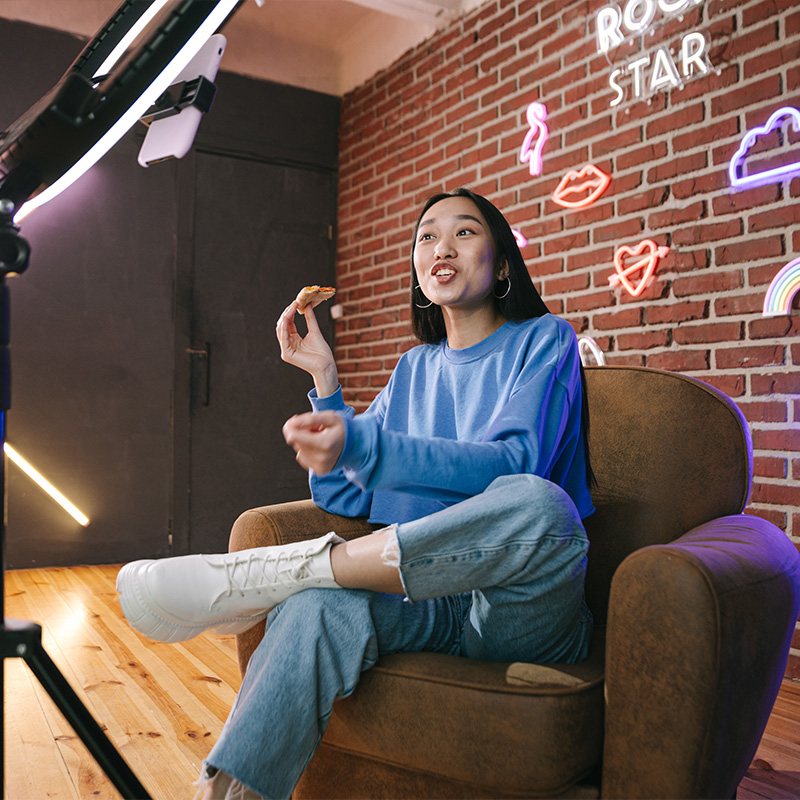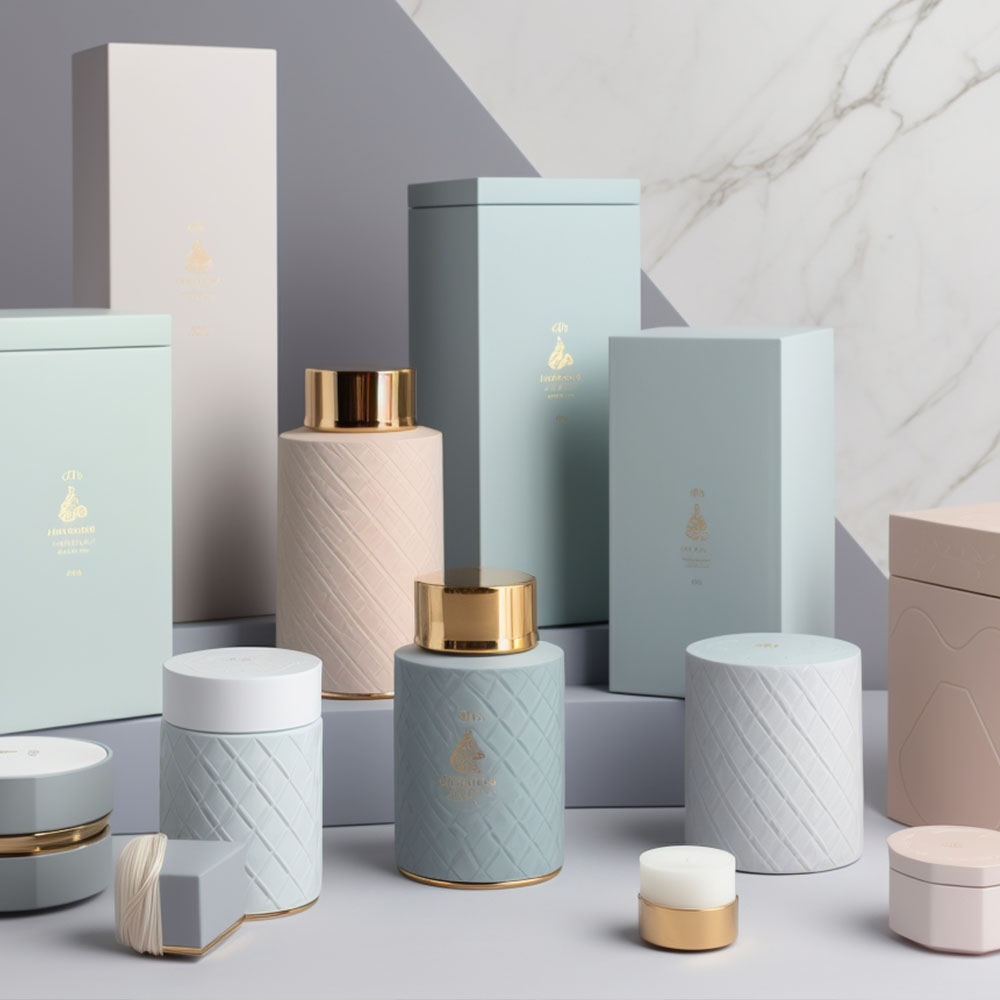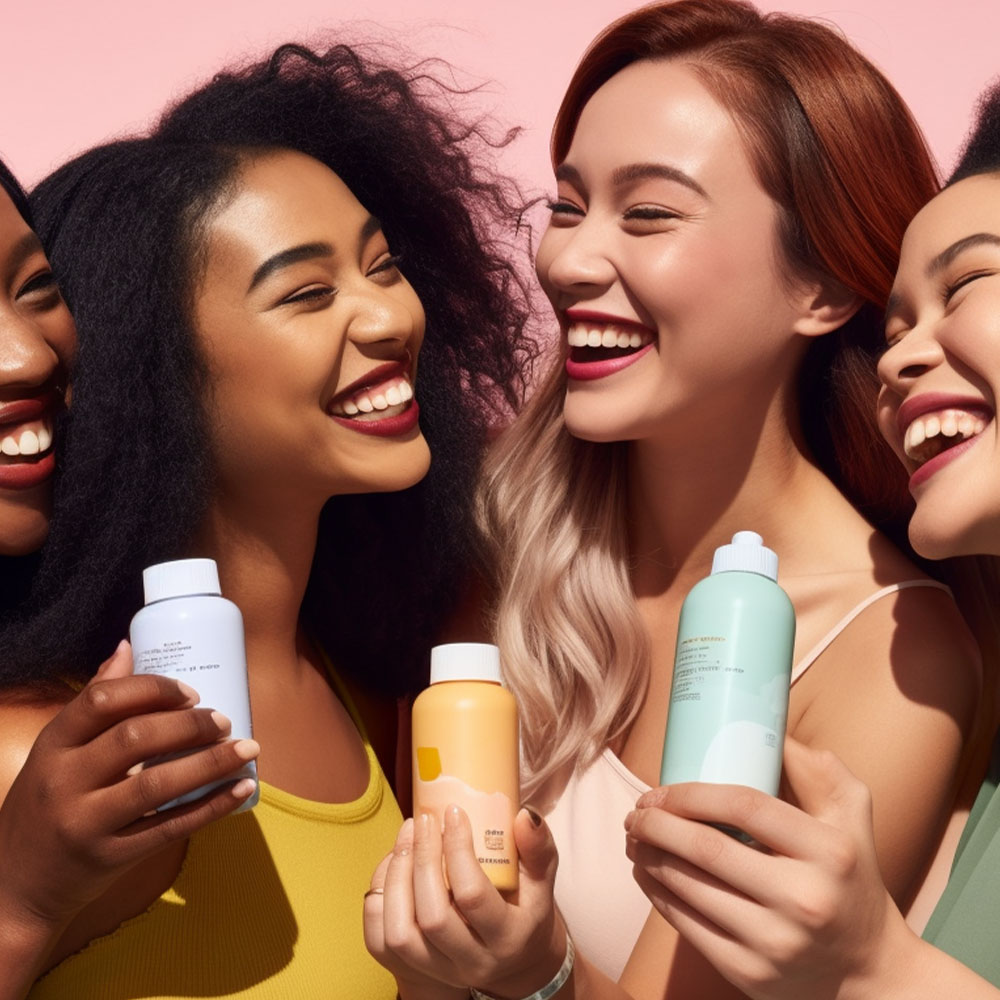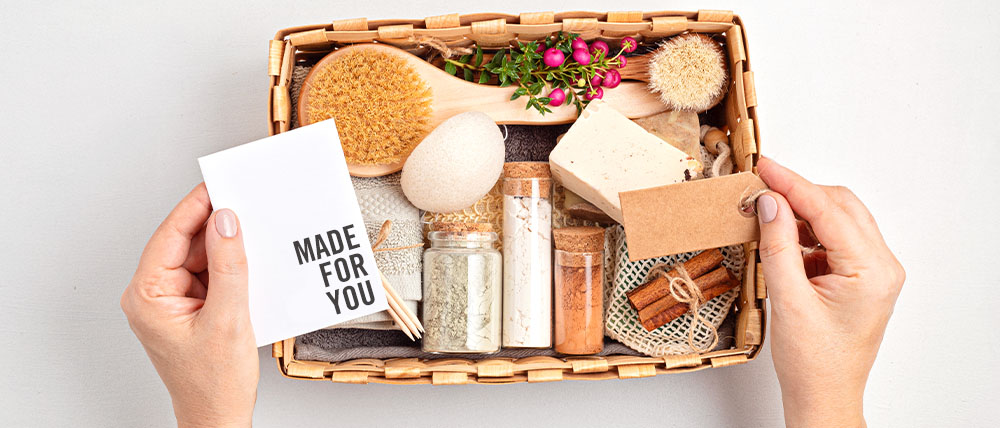
Hey there, beauty enthusiasts! As a marketing expert, personalization is becoming increasingly important in reaching today. It can make or break brand loyalty and sales.
Personalization means tailoring your products and messaging to meet each customer’s needs. And let me tell you, with so many options out there, customers want to feel like they are being seen as individuals rather than just another number on a spreadsheet. So, how can beauty brands incorporate personalization into their marketing strategies? But first, let’s diet and explore the role of personalization in the industry.
Understanding Your Customer Base
It is essential to understand that personalization begins with understanding your customer base. Therefore, segmentation strategies are vital in breaking down the more significant market into smaller consumer groups with similar characteristics and needs. This can be based on demographics such as age or gender and psychographics like values and personality traits.
Once these segments have been identified, it is called customer profiling. This involves gathering data about each group better to understand their preferences, behaviors, and motivations. It could include online interactions like search history or social media activity and offline habits such as shopping patterns.
Using segmentation strategies and customer profiling, brands can create targeted campaigns that speak directly to their audience’s needs and desires. For example, a skincare company might use data to develop personalized product recommendations based on skin type or concerns.
Ultimately, understanding your customers at a deeper level allows you to tailor your approach to meet their specific needs – leading to more robust engagement and loyalty over time. As beauty industry competition continues to increase, brands must stay ahead by delivering experiences that resonate with their audience on a personal level.
Collecting And Analyzing Customer Data
Understanding your customer base is essential in creating a successful beauty brand marketing strategy. Once you have identified your target audience’s demographics, preferences, and habits, the next step is to collect and analyze customer data.
Data privacy should be at the forefront of every marketer collecting customer information. Ensuring that all personal information gathered adheres to ethical considerations and legal requirements is crucial. Customers must feel confident that their data will not be misused or shared without consent.
Effective implementation of the right tools is critical to gathering accurate data on consumer behavior. Brands must use reliable software and platforms to provide insights into customer preferences, purchase history, interactions with social media accounts, and more. Data accuracy is critical in ensuring sound decisions based on such information.
Beauty brands need to take full advantage of customer data analytics to get an advantage over competitors today. Here are four ways this can help:
1) Personalization: Customer data allows brands to create personalized experiences by tailoring products or services to individual preferences.
2) Marketing campaigns: By analyzing customer data, brands can develop targeted marketing campaigns that resonate with specific segments within their audience.
3) Product development: The knowledge about what customers like and dislike helps manufacturers design better products suited for them
4) Brand loyalty: Developing loyal customers requires understanding their needs intimately – which can only happen through tracking their behaviors across touchpoints.
In conclusion, collecting and analyzing customer data is necessary for businesses looking to stay competitive. To do so effectively while maintaining ethical standards requires careful consideration of both technical aspects, such as selecting appropriate software tools alongside a thorough assessment of how collected data may impact consumer’s rights before any action is taken towards utilizing it happens. With these factors combined, companies can leverage valuable insights gained from analytics to build stronger relationships with customers resulting in higher sales conversion rates, ultimately leading to growth!
Creating Personalized Product Recommendations
Did you know that 91% of consumers are likelier to shop with brands that provide personalized recommendations? This statistic shows the importance of creating personalized product recommendations for beauty brand marketing. However, collaborative filtering and AI algorithms have made it possible to explore personalization in a new way.
Collaborative filtering is a technique many e-commerce companies use, including beauty brands, where data from previous purchases and interactions are analyzed to make personalized recommendations. By using collaborative filtering, we can suggest products based on what others with similar interests or purchase histories have bought. This technique allows us to create a seamless shopping experience that caters to each customer.
AI algorithms also play an essential role in providing personalized product recommendations. These algorithms analyze data points such as skin type, concerns, age, gender, and weather patterns to provide tailored suggestions. For example, if someone has dry skin and lives in a cold climate, they may be recommended products that cater to these specific needs, creating a unique customer journey.
Exploring personalization through collaborative filtering and AI algorithms enhances the customer experience and increases sales revenue for beauty brands. When customers feel their needs are met through personalized recommendations, they will return for more. So beauty brands must incorporate this technology into their marketing strategy to stay ahead of the competition.
By utilizing collaborative filtering and AI algorithms, it is essential to personalize product recommendations are the future of beauty brand marketing. As we evolve our understanding of consumer behavior and preferences through advanced analytics techniques, we can create customized experiences for every customer. So why wait? Embrace personalization today and see your business grow!
Tailoring Messaging And Advertising
When it comes to beauty brand marketing, personalization is crucial. Every customer wants to feel special, unique, and valued by the brands they choose to support. Therefore, tailoring messaging and advertising to individual needs and preferences can be a powerful way for brands to connect with their audience on a deeper level.
One way that personalization can be incorporated into beauty brand marketing is through influencer partnerships. Personalization in influencer marketing involves selecting influencers who align with your brand and have authentic connections with their followers. By partnering with influencers who resonate with your target audience, you can create personalized content that speaks directly to consumers and their needs.
Another benefit of personalized social media content is that it can drive engagement rates higher than generic posts. Customers who see content explicitly catered to them are more likely to engage with it through likes, comments, shares, or even purchases. This increased engagement helps build stronger relationships between brands and customers and improves overall visibility across various social media platforms.
In summary, personalization plays a critical role in modern beauty brand marketing strategies. Tailoring messaging and advertising ensures that every customer feels seen and heard by the brands they choose to support while driving engagement rates higher than ever before. Incorporating this approach into influencer partnerships and social media campaigns will ultimately result in long-term success for any beauty brand looking to stand out in today’s market.
Implementing Customized Packaging And Design
Creating unique packaging is critical to standing out to customers, so I suggest ensuring that whatever you design has a good shelf presence. Personalizing design elements are also essential, so incorporating customers or particular messages into the product can help make them feel special. Plus, customizing the packaging can help to draw in customers and make them more likely to purchase. Finally, I’d recommend using different colors, shapes, and materials to make your packaging stand out.
Creating Unique Packaging
As a beauty brand marketing expert, it’s important to keep up with the latest trends and innovations in packaging. One of the most exciting developments in recent years has been the rise of sustainable packaging options. Consumers are increasingly looking for eco-friendly alternatives that align with their values. Incorporating these materials into your product design can be a powerful way to stand out from competitors.
But sustainability is just one aspect of creating unique packaging that helps differentiate your brand. Customized designs that reflect your company’s vision and mission can also significantly impact consumers. By leveraging innovative printing techniques and bold graphics, you can create an eye-catching package that draws attention on store shelves and online marketplaces.
Of course, striking visuals alone aren’t to build customer loyalty. Your customized packaging needs to tell a story about your brand and connect emotionally with potential buyers. This might mean using playful language or inspiring imagery that evokes feelings of empowerment, self-care, or natural beauty. By tapping into these subconscious desires, you’ll have a sense of familiarity and trust, leading to repeat purchases over time.
In conclusion, implementing customized packaging and design is critical to standing out in today’s beauty market. Sustainable materials offer one avenue for differentiation but don’t ignore the importance of visual appeal and emotional resonance. With careful planning and execution, your custom packaging can help elevate your brand above the competition while engaging customers on a deeper level than ever before.
Personalizing Design Elements
Now that we’ve devised the importance of creating customized packaging for your beauty brand, let’s dive deeper into personalizing design elements. Customization and personalization are often used interchangeably, but there is a significant difference between the two. While customization refers to tailoring packaging options to meet specific needs or preferences, personalization involves using data and insights to create individualized experiences.
Personalized design elements can have a profound psychological impact on consumers. By incorporating personalized touches such as names or unique graphics, you’re into their desire for recognition and exclusivity. This enhances the overall customer experience and fosters greater loyalty towards your brand.
When implementing personalized design elements, it’s editorial to balance creativity and relevance. Your packaging should be visually appealing while aligning with your brand identity and values. You may also consider leveraging technology such as augmented reality or QR codes to enhance the personalization experience further.
In conclusion, prioritizing personalization in your custom packaging strategy will see your brand above competitors offering only generic designs. In addition, personalized packaging creates emotional connections with customers that drive repeat purchases over time. Finally, remember that each element of your packaging tells a story about your brand so take the time to ensure every detail reflects who you are as a company – from sustainable materials to personalized design elements.
Offering Personalized Services
Like a tailor-made gown that fits perfectly, customized experiences have become increasingly important in the beauty industry. Personalized consultations with customers offer an opportunity to create a unique and unforgettable experience for each individual. As a result, beauty brands stand out from their competitors by offering personalized services catering to customers’ needs.
Customized experiences start with personalization; it involves creating tailored solutions based on customer preferences, skin type, hair texture, and lifestyle habits. By providing personalized consultations, beauty brands can gain insight into what their clients are looking for and recommend the best products that suit their needs. As a result, customized services not only enhance customer satisfaction but also increase loyalty toward the brand.
Personalized consultations enable beauty brands to establish long-term relationships with their clientele as they understand them better through one-on-one conversations. During these sessions, experts identify clients or challenges with their current routines/products and suggest new alternatives specific to their requirements. It’s lifesaving with your personalized skincare guru at your fingertips.
By incorporating customized experiences into marketing strategies, beauty brands foster innovation within the industry while meeting evolving consumer demands. The table below highlights some of the ways that beauty brands incorporate customization into their offerings:
| Type | Description | Example |
|---|---|---|
| Skincare | Tailored regimen based on skin analysis | Online consultation via video call |
| Makeup | Matching foundations/concealers shades based on skin tone/undertones | In-store color matching technology |
| Fragrance | Creating signature scents based on personality & preferences | Perfume workshops |
Incorporating customizations is no longer optional but necessary for any beauty brand seeking growth and relevance in today’s market. As innovators continue pushing boundaries in product development, differentiation lies in how well we know our audience and provide exceptional service that reflects who they are as individuals.
Utilizing Technology For Personalization
Moving away from offering personalized services, beauty brands can use technology to enhance their personalization efforts further. For example, machine learning has become an increasingly popular tool for companies looking to improve customer segmentation and target specific groups with tailored marketing strategies. By analyzing vast amounts of data, machine learning algorithms can identify consumer behavior and preference patterns, allowing brands to provide a more personalized experience.
Algorithmic analysis is another crucial aspect of utilizing technology for personalization in the beauty industry. Brands can use predictive modeling techniques to anticipate what products or services customers want based on their purchasing history or online activity. This allows them to offer targeted recommendations likely to resonate with individual consumers.
Incorporating these advanced technologies into beauty brand marketing provides a more customized experience for consumers and enables companies to optimize their resources by focusing on high-value targets. Through machine learning and algorithmic analysis, brands can gain insights into what resonates most with different demographics, leading to better targeting and improved ROI.
Overall, leveraging technology for personalization is becoming essential for beauty brands that want to stay ahead of the curve. With the ever-increasing amount of data available today, it’s that companies use tools like machine learning and predictive modeling to make sense of it all and deliver truly personalized experiences that meet each customer’s needs.
- Personalized product recommendations: Our algorithms analyze previous purchases and reviews to suggest new products you love!
- Feeling confident: We know how important it is that you feel great about yourself! So that’s here to help you find the perfect shade.
- Exclusive deals just for you: As part of our commitment to providing a truly personalized experience, we offer exclusive promotions tailored to your interests.
Building Brand Loyalty Through Personalization
Personalization is not just a buzzword in the beauty industry; it’s essential to any successful marketing strategy. However, finding the right balance between personalization and standardization can be challenging. While customizing products to meet individual needs may seem like the ideal solution, brands must also ensure that their offerings remain consistent across different markets.
Despite this challenge, personalization remains a powerful tool for building emotional customer connections. By tailoring product recommendations based on consumer preferences, brands can create a sense of exclusivity and make shoppers feel seen and heard. This approach goes beyond simply selling products; it creates an emotional connection that helps build brand loyalty over time.
One example of effective personalization in action is Sephora’s Insider program. Members receive personalized recommendations based on their purchase history and access to exclusive rewards and events. This level of customization encourages repeat purchases and fosters a sense of community among members who share similar interests.
In conclusion, while balancing personalization and standardization can be tricky, personalized marketing has become essential in today’s landscape. Building emotional connections through customized experiences can help foster long-term customer loyalty and drive business growth. As such, investing in innovative technologies that allow for more seamless personalization should be at the top of every beauty brand.
Measuring The Success Of Personalization Efforts
Personalization efforts have become increasingly important as beauty brand marketing continues to evolve. However, it is not enough to implement personalized strategies without measuring their effectiveness. Measuring the success of personalization efforts is crucial for brands looking to adapt to changing preferences and stay ahead in a competitive market.
One way to measure personalization metrics is through customer feedback. Brands can ask customers about their personalized product or service experiences and use this information to improve future offerings. This type of feedback loop allows brands to continuously refine their personalization efforts and better meet the needs of their audience.
Another key metric for measuring personalization success is conversion rates. By tracking how many customers convert after experiencing personalized recommendations or offers, brands can understand whether these efforts drive sales and increase revenue.
Additionally, engagement levels can also serve as an indicator of successful personalization. When customers feel that a brand truly understands them and caters to their unique needs, they are more likely to engage with the brand’s, social media channels, and other offerings.
Finally, brands must be agile and adaptable when measuring personalization efforts’ success. As consumer preferences shift rapidly in response to external factors such as global events or new trends, beauty companies must remain nimble to keep up with evolving consumer demands.
By effectively measuring the success of personalization efforts using metrics like customer feedback, conversion rates, engagement levels, and agility in adapting to change, beauty brands can ensure that they continue delivering innovative and effective solutions that resonate with consumers on a deeper level than ever before.
Staying Ahead Of The Personalization Curve
As beauty brand marketers, we understand the importance of staying ahead of our customer’s needs and preferences. Developing personalization strategies is one way to do this. By offering personalized products and experiences, we can create deeper connections with our consumers.
However, it’s important to note that personalization isn’t a pintsize-fits-all approach. As consumer preferences change rapidly, brands must adapt their personalization strategies accordingly. This means keeping up-to-date on emerging trends and technologies that enable us to offer new levels of customization.
One such trend is the rise of virtual try-on technology. With more consumers shopping online than ever, virtual try-on tools allow them to see how different shades or styles will look on their face or skin tone. Incorporating these features into our product offerings allows for greater personalization and a more engaging customer experience.
Ultimately, staying ahead of the personalization curve requires ongoing innovation and experimentation. Brands must be willing to take risks to stand out in an increasingly crowded marketplace. By constantly adapting to changing consumer preferences and leveraging emerging technologies, we can ensure that our products remain relevant and appealing to our target audience.
Conclusion
As a beauty brand marketing expert, I understand the importance of personalization in connecting with our customers. Understanding their unique needs and preferences allows us to create personalized product recommendations, tailor messaging and advertising, and implement customized packaging designs.
But personalization doesn’t stop here. Utilizing technology allows us to take personalization to the next level by creating interactive experiences that engage and delight our customers. And through these efforts, we build brand loyalty that lasts beyond a single purchase.
As we continue to stay ahead of the personalization curve, it’s that we measure the success of our efforts and adjust accordingly. By doing so, we can ensure that our customers feel seen, heard, and valued – ultimately leading to stronger relationships and increased sales.
Let’s start building your brand! Click here.


